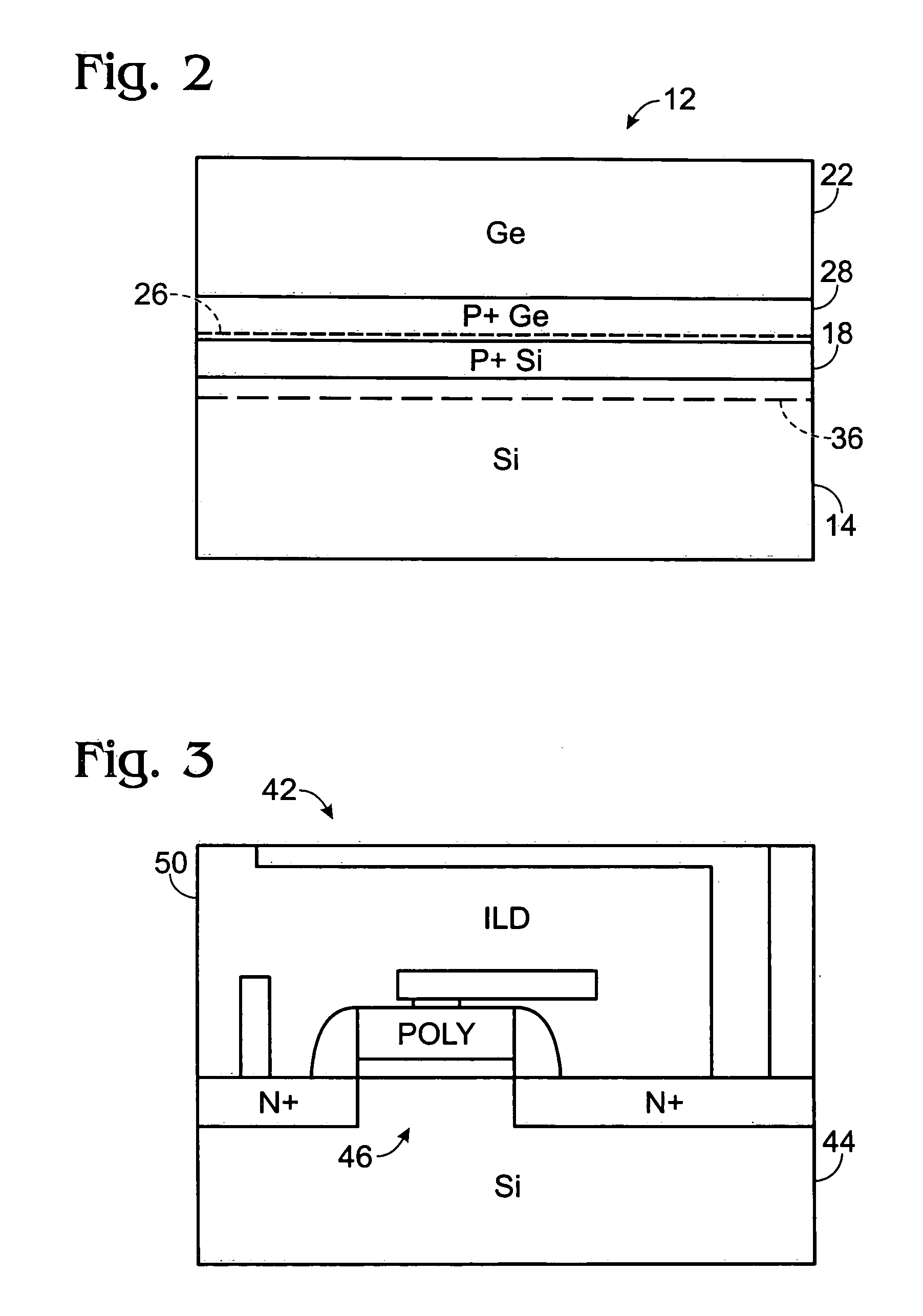Germanium infrared sensor for CMOS imagers
- Summary
- Abstract
- Description
- Claims
- Application Information
AI Technical Summary
Benefits of technology
Problems solved by technology
Method used
Image
Examples
Embodiment Construction
[0013] This disclosure differs from the above-cited U.S. Patent Application in that in the previous disclosure, the germanium wafer is bonded onto a silicon CMOS wafer, and in this disclosure, a germanium thin film is grown onto a silicon donor wafer, followed by a bonding process.
Preparation of Donor Wafers
[0014] Referring now to FIGS. 1 and 2, the initial steps in the method of the invention 10 include preparation of what is referred to herein as a donor wafer 12, including preparation of a convention silicon wafer 14. Ion implantation 16 of boron ions into the silicon wafer converts the surface layer of the donor silicon wafer to a P+ material 18. The doping density is in the order of 1×1019 cm−3 to 1×1020 cm−3.
[0015] The next step is epitaxial growth 20 of between about 0.5 μm to 4.0 μm of germanium 22 onto the P+ wafer material, followed by cyclic annealing 24. The range of temperature for the high temperature portion of the cyclic annealing is between about 800° C. to 900°...
PUM
 Login to View More
Login to View More Abstract
Description
Claims
Application Information
 Login to View More
Login to View More - R&D
- Intellectual Property
- Life Sciences
- Materials
- Tech Scout
- Unparalleled Data Quality
- Higher Quality Content
- 60% Fewer Hallucinations
Browse by: Latest US Patents, China's latest patents, Technical Efficacy Thesaurus, Application Domain, Technology Topic, Popular Technical Reports.
© 2025 PatSnap. All rights reserved.Legal|Privacy policy|Modern Slavery Act Transparency Statement|Sitemap|About US| Contact US: help@patsnap.com



